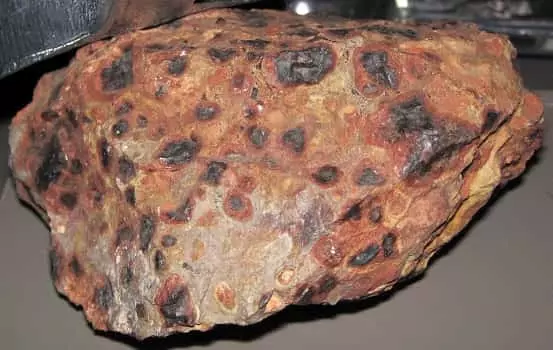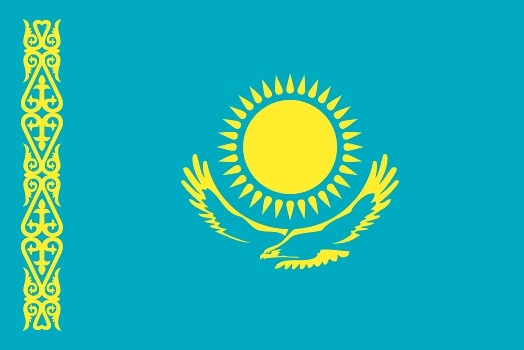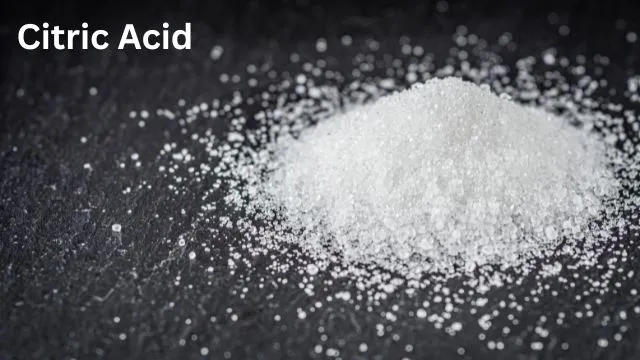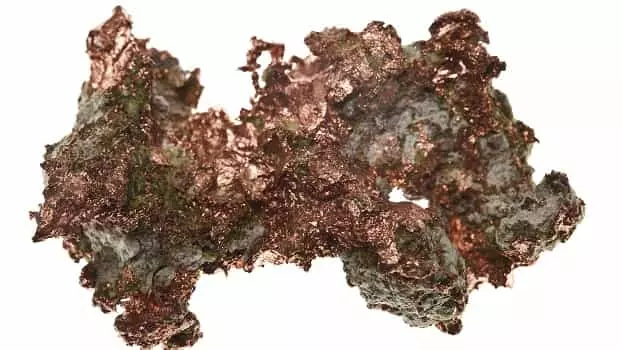From the industrial as well as metallurgic point of view, aluminum is a really important metal. It is lightweight, robust, has good thermal conductivity, and has great corrosion resistance. Not just that, from the industrial perspective, since aluminum can be molded into any shape pretty easily, it can be used in the making of various things. Aluminum is used both in industrial areas as well as at the level of households. Aluminum is undeniably one of the most popular and widely used metals, but where does it come from? Well, it is extracted from raw minerals like Bauxite. However, bauxite contains not just aluminum hydroxides, but also other minerals and oxides such as Fe-oxy-hydroxides, Ti-oxides, and aluminosilicate protoliths.
That is the prime reason why bauxite is important for non-metallurgical industries as well. Many countries use bauxite for the chemical industry and in the making of abrasives, steel, cement, etc. Now you know how important raw mineral bauxite is, but do you know which countries mine and produce the largest amount of bauxite every year? You may hear of Australia producing the highest quantity of bauxite every year, but what about other countries? And today’s post is going to be all about that, we will be putting some light on the other largest producers of bauxite in the world. So let’s get down to it then. Shall we?

Top Countries for Bauxite Production in World
1. Australia

Since it is just the beginning of Q4 of this industrial year, there is no data for the current year, but based on the previous year’s data, Australia is the biggest and largest producer of bauxite in the world. Australia holds the first position with a whopping 105 million metric tonnes. And the bauxite rate of production is steadily increasing every year. The growth has been noticed to be anywhere between 2.5% to 4.1% every year. It’s been a few decades since Australia has been holding the number one spot for bauxite production, and all that is possible because of the stable bauxite mining sector. Because of that, Australia also contributes to the overall export of bauxite in the world with an incredible export amount of 39.6 million metric tonnes in 2021.
2. China

Just in 2018, China was at the 3rd spot on the largest bauxite producers’ list. But there has been a sudden jump in the last few years, where China produced around 65 million metric tonnes of bauxite in 2018, and it managed to increase the production till 2021 with an insane growth. From recent years’ bauxite production data, it is estimated that China has passed Guinea in 2021 by producing nearly 86 million metric tonnes of bauxite. However, China imports more bauxite and aluminum than any other country in the world. China imported 101.6 million metric tonnes of bauxite in the year 2020 alone. That indicates how fast and huge China’s industrial growth is as compared to the top economies like the USA.
3. Guinea

The weather conditions are perfect for the formation of bauxite in Guinea. Some experts have stated that Guinea can easily be the largest producer of bauxite if the mining sector is updated and works at its finest. But still, from 2021 data, Guinea holds 3rd spot on the list of largest bauxite producers. In just recent years, China made a whopping increase in overall production, which is the reason Guinea pushed back to the 3rd spot. However, when the bauxite production data for 2022 will come out, it is estimated that Guinea may recover its ranking since the mining companies have increased their production by a certain percentage in Guinea. Along with that, it is quite interesting that Guinea exports almost 50% of the bauxite to other countries. But the revenue generated from the bauxite exports isn’t very promising as compared to other nations.
4. Brazil

Brazil is mostly known for its iron ore and crude oil exports, which contribute to the overall exports of iron and crude in the world. However, Brazil also exports bauxite since there is a stable mining sector for bauxite. That is the reason why Brazil holds the fourth spot when it comes to the overall bauxite production in the world. Not just that, Brazil has the biggest bauxite reserves along with Australia, China, and Guinea. According to the data for 2021, Brazil has reached an incredible bauxite production amount of 30 million metric tonnes. However, the growth of bauxite production is quite steady but slow because, in 2018, the bauxite production in Brazil was around 27 million metric tonnes.
5. India

India is not a huge exporter of bauxite, since, in 2021, India only exported 400 thousand metric tonnes. The mining sector is on the boom in India, not just for minerals like bauxite, but for other metals as well. And it is estimated that by 2025-27, India will become the 4th largest bauxite producer. On the basis of 2021 data, India produced just over 26 million metric tonnes in the industrial year. And from the last few years, there’s been a steady growth in mining as well as other fields in India. Therefore, in terms of the overall economy, India has just surpassed the United Kingdom and now is in the top 5 largest economies in the world.
6. Indonesia

The production of bauxite in Indonesia has dipped quite a lot in the last few years. Primarily because many mining sites are now closed. From the data of 2018, Indonesia produced 23 million metric tonnes of bauxite, but it has now decreased to just 18 million metric tonnes. However, the bauxite reserves of Indonesia are still strong enough to fulfill the needs of various industries in the nation. Indonesia has maintained bauxite reserves of 1 billion metric tonnes. But it is estimated that Indonesia can maintain around 17 to 19 million metric tonnes of bauxite production volume.
7. Russia

Russia’s bauxite exports are negligible, however, in terms of imports, Russia imports around 4.77 million metric tonnes. And if we were to talk about the overall production of bauxite in Russia, it is nearly 6 million metric tonnes. That is less than 5% of what Australia produces every year. And the prime reason behind this is the weather conditions, which don’t support the formation of bauxite. And in terms of the bauxite reserves, Russia’s reserves are just 500 thousand metric tonnes. It is because Russia doesn’t import raw materials, instead, the government prefers to import processed metals like aluminum, iron, and steel.
8. Jamaica

There are not as many mines for bauxite production as in other countries on this list. But still, Jamaica managed to produce around 5.8 million metric tonnes of bauxite in 2021. And to fulfill the needs of the industrial companies as well as other sectors, Jamaica imports nearly 21 million metric tonnes of bauxite every year. The weather conditions in Jamaica are somewhat good for bauxite formation, but still, the mining sector isn’t strong enough. This is why the government has to import bauxite from the other largest producers.
9. Kazakhstan

If Kazakhstan was still a part of Russia, even then Russia couldn’t make it to the top 5 largest bauxite producers in the world. However, there is quite a good amount of bauxite present in the soil. But this Central Asian country doesn’t have a strong mining sector, that’s why it lacks in terms overall bauxite production. But still, Kazakhstan produced around 5.2 million metric tonnes in 2021. The production of bauxite in Kazakhstan has been somewhat stable for the last few years.
10. Saudi Arabia

Saudi Arabia is known for its crude oil production, and this is what keeps the economy of this country stable. Other than that, Saudi Arabia imports metals from other big economies, and therefore the mineral mining sector isn’t as strong as others in this list. But since Saudi Arabia uses bauxite in the petroleum industry, therefore some amount of bauxite is produced and processed in the country. According to the reports for 2021, Saudi Arabia has produced nearly 4.3 million metric tonnes.
Conclusion
There’s abundant bauxite present in the soil of countries like Australia, Guinea, and China. And over the years, these countries have been contributing to the overall production of bauxite. However, countries like China don’t have a huge role in exporting and fulfilling the demand of other nations. And thankfully, Australia and Guinea continue to increase their production rate as well as exports to fulfill the demand in the world market.
Bauxite Production FAQs
Q. How is Bauxite Extracted?
Ans: Bauxite is typically extracted through open-pit mining. It is first broken up and then transported to a processing plant for further refinement.
Q. What Happens at the Processing Plant?
Ans: At the processing plant, bauxite is refined to produce alumina (aluminum oxide) through a process called the Bayer process. Alumina is the intermediate product used to make aluminum.
Q. What Is the Bayer Process?
Ans: The Bayer process involves crushing and grinding bauxite into a fine powder, followed by digestion in a hot, concentrated solution of sodium hydroxide. This process dissolves aluminum compounds from the bauxite, leaving impurities behind.
Q. How is Aluminum Extracted from Alumina?
Ans: Aluminum is extracted from alumina through an electrolytic process called the Hall-Héroult process. It involves passing an electric current through molten alumina to separate aluminum from oxygen.
Q. What Are the Uses of Bauxite?
Ans: The primary use of bauxite is in the production of aluminum. Aluminum is used in a wide range of applications, including construction, transportation (e.g., cars and airplanes), packaging, and electrical wiring.
Q. How Much Bauxite Is Produced Globally?
Ans: Global bauxite production varies from year to year. As of my last knowledge update in September 2021, the annual production was around 370 million metric tons. However, this figure may have changed since then.
Q. What Are the Environmental Impacts of Bauxite Mining?
Ans: Bauxite mining can have environmental impacts, including deforestation, habitat destruction, and water pollution. Sustainable mining practices and environmental regulations are in place in many regions to mitigate these impacts.
Q. What Is the Future of Bauxite Production?
Ans: The future of bauxite production depends on factors such as demand for aluminum and the development of new mining sites. As of my last update, there was a growing interest in sustainable mining practices and value-added processing of bauxite.














